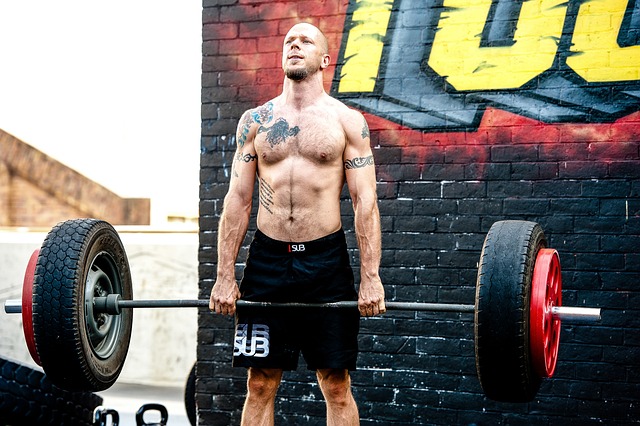Strength – it’s the foundation of physical prowess and the cornerstone of a thriving body. Whether your goal is to build muscle, enhance athletic performance, or simply lead a healthier life, effective strength training holds the key to unlocking your full potential. In this comprehensive guide, we’ll delve deep into the world of strength training, exploring the principles, techniques, and strategies that will help you unleash your inner strength and achieve remarkable results.
Understanding Strength Training: Beyond Muscle Building
Strength training, also known as resistance training or weightlifting, involves engaging in exercises that challenge your muscles against external resistance. This is taught as a foundation in all personal trainer courses While muscle building is a significant outcome of strength training, the benefits extend far beyond bulging biceps. Strength training is a catalyst for numerous physiological and psychological transformations:
Muscle Hypertrophy: The process of muscle growth, or hypertrophy, is a central aspect of strength training. By progressively overloading your muscles, you stimulate them to adapt and grow in size and strength.
Metabolic Boost: Muscles are metabolically active tissues. As you build muscle, your resting metabolic rate increases, contributing to greater calorie burn even when you’re at rest.
Bone Health: Strength training places stress on your bones, stimulating them to become denser and stronger. This is particularly important for preventing osteoporosis and maintaining bone health as you age.
Functional Fitness: A strong body is better equipped to perform daily activities with ease. From lifting heavy objects to climbing stairs, strength training enhances your overall functional capacity.
Joint Health: Strong muscles stabilize your joints, reducing the risk of injuries and improving joint integrity. This is especially relevant for those recovering from injuries or dealing with joint conditions.
Hormonal Balance: Strength training triggers the release of hormones like testosterone and growth hormone, which play a crucial role in muscle growth, fat loss, and overall well-being.
Principles of Effective Strength Training: Laying the Groundwork
Before diving into the specifics of strength training, it’s crucial to understand the foundational principles that govern its effectiveness:
Progressive Overload: This principle is the cornerstone of strength training. It involves gradually increasing the resistance, intensity, or volume of your workouts to continuously challenge your muscles.
Specificity: Tailor your workouts to your goals. If you’re aiming for muscle growth, focus on higher repetitions and moderate weights. For strength gains, opt for lower reps and heavier weights.
Variation: Your body adapts to repetitive routines, leading to plateaus. Incorporate variation in exercises, angles, and equipment to keep your muscles guessing and growing.
Rest and Recovery: Muscles need time to repair and grow. Adequate sleep, proper nutrition, and rest days are essential for optimal recovery and long-term progress.
Designing Your Strength Training Routine: The Blueprint
Creating an effective strength training routine involves strategic planning to ensure balanced muscle development and consistent progress. Here’s a step-by-step guide to crafting your routine:
Set Clear Goals: Define your goals – whether it’s building muscle, gaining strength, or improving overall fitness. Your goals will guide the structure of your routine.
Choose Exercises: Select compound exercises that engage multiple muscle groups. These include squats, deadlifts, bench presses, and overhead presses.
Plan Reps and Sets: The number of repetitions (reps) and sets determines the volume of your workout. Aim for a balance between strength-focused lower rep ranges (1-6 reps) and hypertrophy-focused higher rep ranges (6-12 reps).
Determine Intensity: Intensity refers to the weight you lift relative to your maximum capacity. As a general guideline, higher reps require lighter weights, while lower reps require heavier weights.
Frequency: For beginners, starting with 2-3 strength training sessions per week is a good approach. As you progress, you can increase the frequency to 4-5 sessions per week, with adequate rest days in between.
Warm-Up and Cool-Down: Begin your workout with a dynamic warm-up to prepare your muscles for the upcoming activity. End with a cool-down that includes static stretching to enhance flexibility and aid recovery.
Nutrition and Strength Training: Fueling Performance
Nutrition is the fuel that powers your strength training journey. Proper nutrient intake ensures optimal performance, recovery, and muscle growth:
Protein: Protein is essential for muscle repair and growth. Aim to consume a protein source with each meal to provide your muscles with the building blocks they need.
Carbohydrates: Carbs are your body’s primary energy source. Consuming complex carbs before workouts fuels your performance, while post-workout carbs aid in recovery.
Hydration: Staying hydrated is vital for muscle function and overall performance. Aim to drink water throughout the day and consider electrolyte-rich beverages during intense workouts.
Timing: Consuming a balanced meal that includes protein and carbs about 1-2 hours before your workout can enhance your energy levels and support muscle growth.
Lifting Techniques and Safety: Form Matters
Performing exercises with proper form is not only crucial for effectiveness but also for preventing injuries. Here are some tips to ensure your lifting techniques are on point:
Start Light: When learning a new exercise, start with light weights to focus on mastering the correct form. Gradually increase the weight as you become more comfortable.
Engage Your Core: Proper core engagement provides stability and protects your spine. Maintain a neutral spine and engage your core muscles throughout the movement.
Full Range of Motion: Perform exercises through a full range of motion to maximize muscle activation and prevent joint imbalances.
Breathe: Exhale during the exertion phase of the movement and inhale during the eccentric phase. Proper breathing enhances stability and oxygenates your muscles.
Rest and Recovery: The Art of Healing
Rest and recovery are as important as the workouts themselves. Overtraining can lead to burnout, injuries, and stalled progress. Here’s how to prioritize recovery:
Sleep: Aim for 7-9 hours of quality sleep each night. Sleep is when your body repairs and rebuilds muscle tissue.
Active Recovery: Incorporate light activities like walking, yoga, or stretching on your rest days. This promotes blood circulation and aids in recovery.
Nutrition: Consume a balanced diet that includes adequate protein, carbs, fats, vitamins, and minerals. Proper nutrition supports muscle repair and overall well-being.
Massage and Foam Rolling: These techniques help release muscle tension, improve circulation, and alleviate soreness.
Tracking Progress: Measuring Your Strength Gains
To gauge the effectiveness of your strength training program, it’s important to track your progress over time:
Keep a Workout Journal: Record your exercises, sets, reps, and weights for each session. This helps you track your progress and identify areas for improvement.
Use Performance Metrics: Monitor objective performance metrics, such as the weight you can lift for a certain exercise, the number of push-ups you can do, or the time it takes to complete a specific workout.
Body Measurements: Regularly measure your body composition – including weight, body fat percentage, and muscle mass – to assess changes in your physique.
Conclusion: Embrace Your Inner Strength
Strength training is a journey of self-discovery, empowerment, and transformation. As you progress through your training program, you’ll not only witness changes in your physique but also experience newfound confidence, resilience, and a deeper connection to your body. By understanding the principles, techniques, and strategies outlined in this guide, you’re equipped to unleash your inner strength and achieve feats you never thought possible. Remember, strength isn’t just about lifting weights; it’s about lifting your spirit, pushing your boundaries, and embracing the incredible potential that resides within you.







